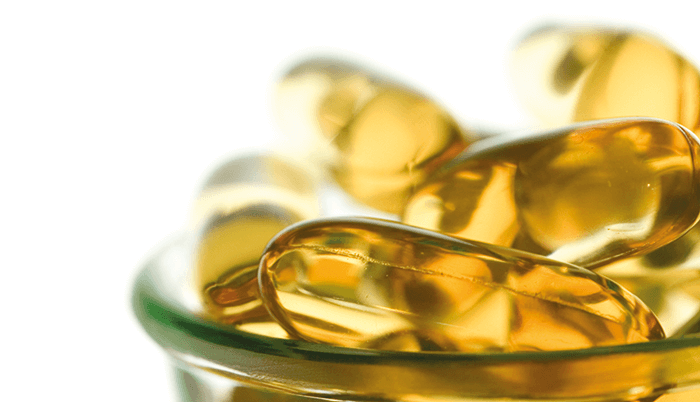
Shaukat Ali has spent most of his professional life immersed in lipids. After obtaining a PhD from the City University of New York in lipid-chemistry and the post-doc from the University of Minnesota and Cornell University in the physical biochemistry of lipids, he joined The Liposome Company (Princeton, NJ), where he developed methods to reduce drug toxicity by formulation in liposomes. Now, as Technical Support Manager for Pharma Ingredients & Services at BASF, Ali promotes BASF’s range of solubilizers and polymers for drug formulation, including a selection of lipid-based drug delivery systems (LBDDSs). “The bioavailability challenge is enormous,” Ali says. “There is no one-size-fits-all approach, but it’s immensely satisfying to determine the best formulation for a given molecule.”
The insolubility solution
Water-insoluble drugs usually dissolve in non-aqueous solvents, such as ethanol, but will rapidly precipitate once that solution is introduced to an aqueous medium, such as which is found in the stomach. Oral delivery of these drugs, however, is not impossible. Ali says the key, is to add other components or solubilizers to the non-aqueous drug solution so when the solution is mixed with an aqueous medium, it emulsifies to form tiny droplets that contain the drug and protect it from exposure to water. Ideally, the droplets both prevent drug precipitation and are readily absorbed. The magic ingredients that promote emulsification are surfactants – molecules that have both hydrophobic and hydrophilic regions, providing them with the convenient ability to interact with both aqueous and non-aqueous media. “In practice, this means that the solution of drug dissolved in the non-aqueous solvent is distributed in the aqueous medium as a suspension of microdroplets – a microemulsion – each bound by a layer of surfactants in which the hydrophobic tails of the surfactant are oriented to the interior of the micelle, and the hydrophilic headgroups oriented to the exterior,” explains Ali. Ali’s expertise lies in the precise choice of surfactants. Getting the lipid based surfactants right is crucial because all surfactants have different chemistries and every drug is unique. “It’s a case of matching the correct surfactant to a given drug in the context of that drug’s delivery requirements. The aim is to identify a surfactant which can not only emulsify the drug as outlined above, but also ensure that the drug remains encapsulated in the interior core during gastro-intestinal transit, ultimately getting efficiently absorbed,” says Ali.Fat benefits
When it comes to micro-emulsion stability, Ali points out that drugs need to remain in solution for extended periods – perhaps 3-5 hours – as they move through the stomach to the absorptive region of the gut. A drug may seem perfectly stable in a given LBDDS at first, but if it starts precipitating after only 30 minutes then the formulation will need to be redesigned. Furthermore, given the number and range of pH changes to which the micro-emulsion droplets are exposed as they move from stomach to intestine, it is essential the droplets remain stable over a broad pH range. Ali says, “The ideal surfactant should be non-ionic so it is resistant to pH changes.” However, it is not just gastrointestinal pH fluctuations that can cause problems – what about all the digestive enzymes? If enzymes penetrate the micro-emulsion, they hydrolyze the surfactant fatty acid chains, breaking down the ester linkage between the hydrophilic and hydrophobic parts of the surfactant. Once that happens, the droplets rapidly break down, exposing their drug cargo to aqueous media, which results in drug precipitation. Resistance to digestion therefore is essential; and it too depends on the surfactant’s fatty acid composition of the micro-droplets. “The packing of fatty acid chains inside the microemulsion is critical to the stability of the LBDDS formulation,” says Ali. “One solution is to use an emulsifying agent (such as BASF’s polyoxyl 40 hydrogenated castor oil (Kolliphor® RH40) that has a long, saturated C18 fatty acid chain that goes deep into the droplet core. These features will reinforce the micro-emulsion surface by making it more tightly packed and promoting lateral interactions between fatty acid chains like those found in lipid-cholesterol natural membrane.” Such features keep out digestive enzymes, protecting surfactant molecules from ester cleavage, whereas surfactants with short and unsaturated fatty acid chains may provide looser packing and less effective enzyme exclusion, making them less digestion-resistant. To promote good drug absorption, emulsion droplet size is critical. Droplet size is a function of emulsification rate, which in turn is, again, dependent on the amount of surfactants in the formulation. Ali says that BASF’s surfactants routinely provide droplets of 20-150 nm, depending on the precise surfactant and formulation composition. “At that size, they just disappear in an aqueous medium –the solution is completely clear. Nanometre-sized droplets get absorbed very efficiently, which is always a benefit in drug delivery,” he says.
In addition, smaller particles are also less likely to suffer from food effects. Ali points to cyclosporine as an instructive example. Novartis first launched cyclosporine as Sandimmune®, but years later it was reformulated and launched under a new name, Neoral®. “The Sandimmune® formulation does not self-emulsify; it forms large emulsion particles that vary in bioavailability, for example between fasted and non-fasted patients,” explains Ali, “but food effects aren’t seen in Neoral® because it has the right surfactant, so it is self-emulsifying and produces only tiny droplets.”





